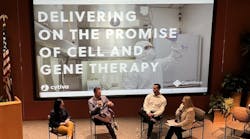When he first assessed FDA’s draft Process Validation guidance a few years ago, consultant James Agalloco, president of Agalloco & Associates, saw the usefulness of the guidance for validating pharma production processes and products. “The life-cycle model will result in development and validation exercises that provide relevant and meaningful information,” he wrote. “The link between the process parameters that influence the critical quality attributes will serve the industry well. The use of statistical methods will add a rigor to the validation efforts that has been sorely lacking” [1].
However, he expressed serious reservations (and shared them with FDA) about whether the PV guidance could easily be applied to processes and systems “less clearly related to end-product quality attributes.” This includes sterilization and aseptic processes.
“There are simply too many independent—and interrelated—variables in aseptic processing, and the most meaningful one of all lacks metrics of any type . . . Aseptic processing performed by human operators is devoid of any measurable variable that could be used to predict the outcome.” He concluded: “The statistical component of the guidance really doesn't work with respect to linking any process parameters directly to performance.”
Now that the guidance is official, we checked in with Agalloco to see if his views have softened. Far from it, it turns out. The guidance is a “terrible fit” for the validation of aseptic processes, he maintains.
“I've seen more confusion than clarity,” Agalloco says. “I've seen no indication in the final guidance or anywhere else that suggests things should be changed to accommodate sterility within the new guidance.”
Agalloco teaches regular courses on validation of aseptic processes, but has not changed them to reflect the new guidance. “There's nothing you can change in the practice of either sterilization or aseptic processing that is of any value to fit the guidance,” he says. “I see no need to adapt, because the adaptation will gain nothing of real value.”
The new guidance reinforces the need for science and process simulation testing—isn’t that a good thing? In general, yes, he says. But, “for aseptic processing its about set-up and interventions, and what the operator does in relation to them. Humans are awful subjects for DoE, QbD and all of the scientific buzz we hear about in relation to the guidance.”
Will the PV guidance dramatically change the way manufacturers approach the validation of sterilization processes—filtration sterilization, for example?
“Not in the least,” Agalloco says. “There's no suggestion that anything can or should be changed to match the guidance. Even FDA (Grace McNally, at PDA in San Antonio in April of this year) has stated that the ‘guidance doesn't specifically apply to sterilization.’ Making changes to fit these processes to the guidance is done at one's peril.”
The PV guidance recommends activities in three stages (process design, process qualification, and continued process verification), which depend on process characterization studies (with Key Process Input Variables, Design Space, etc.). Are most manufacturers able to adequately characterize their aseptic processes and sources of variability?
Says Agalloco: “Not at all. As the article [1] states, there's some possibility with sterilization as it relates to Stage 1, but that's about all that fits. Stage 2 & 3 lack adequate metrics to develop the confidence from what we can routinely measure in the process for sterilization so it's not a good fit there. Aseptic processing is just a horrible fit all around.”
We also consulted with Sartorius Stedim’s Maik Jornitz, current chair of the board at PDA, about whether the guidance will make a difference regarding the validation of filtration processes, one of his areas of expertise. “I do not think that the new Process Validation Guidance will change the process validation needs and activities surrounding sterilizing grade filtration,” he says. “The 2004 Aseptic Processing Guidance makes it very clear what is expected by regulators in regard to sterilizing grade filter validation, which is still very valid and unchanged by the new Process Validation Guidance.”
Will this guidance help filter end users to better understand which filter process input variables are "critical to quality"? “I do not know whether it will help, but it will raise the awareness and emphasis that there are critical variables within the filtration process,” Jornitz says. “The 2004 Aseptic Guideline touches upon and PDA Technical Report #26 describes in detail these critical process parameters, if the awareness is not already there.”
Jornitz, a frequent writer, speaker, and lecturer, has long preached a “science-based” approach to filter validation, and so believes the PV guidance will support this trend but is not necessarily a game-changer: “I believe everybody in the industry is working in accordance to a science-based approach,” he adds. “Therefore, guidances are only there to reiterate or support what should and is commonly done—or so I hope . . . I do not think that the Process Validation Guidance states something new here.”
References
1. Agalloco, J.P. “FDA's Draft Guidance for Process Validation: Can It Be Applied Universally?”Pharmaceutical Technology. May 1, 2009.





